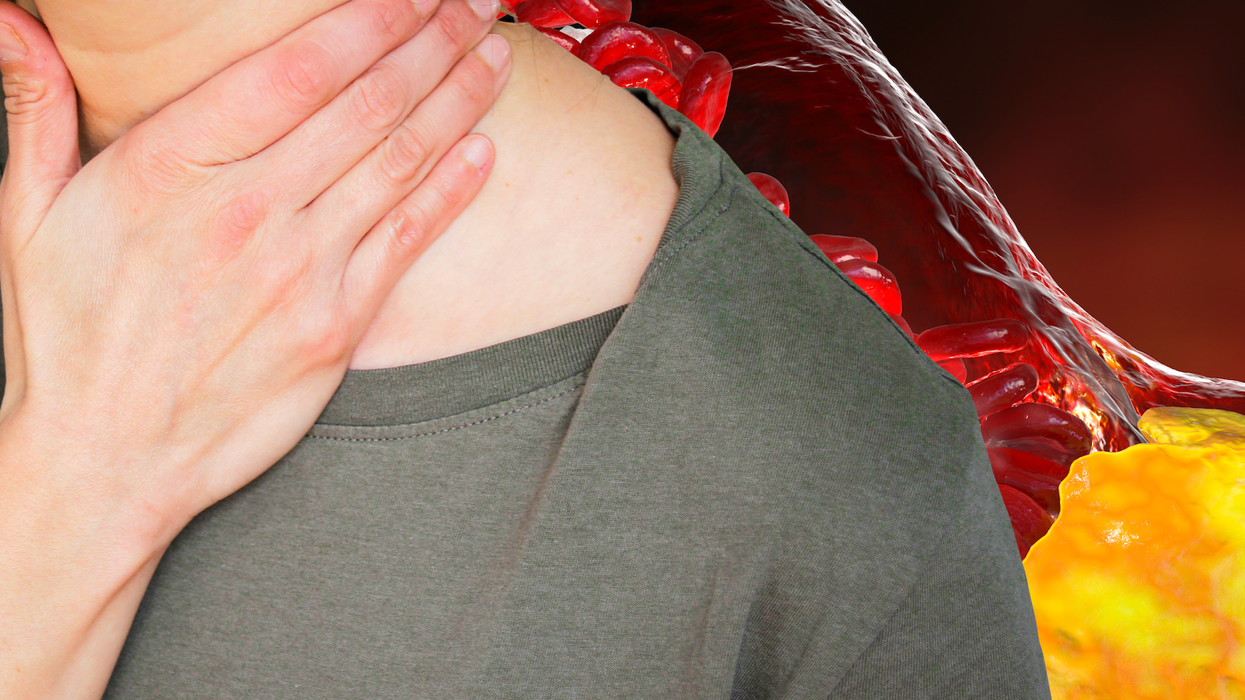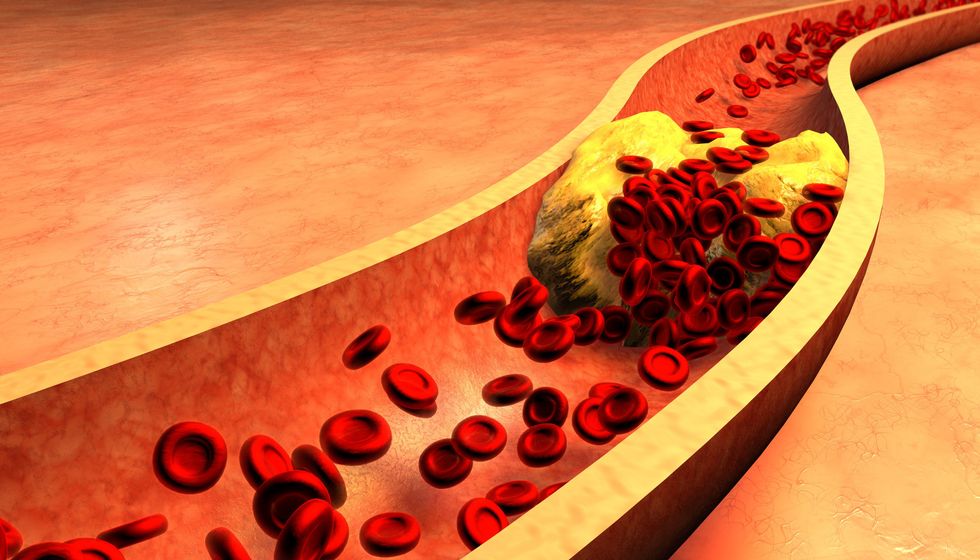'I found out I had high cholesterol after a symptom crept up my neck - spotting it saved my life'

Woman found out she had dangerously high cholesterol levels after a 'prickly sensation' crept up her neck.
|Getty Images

The 54-year-old mother-of-two was taking her dog for a walk when disaster struck
Don't Miss
Most Read
Latest
A mother-of-two found out she had dangerously high cholesterol levels after a "prickly sensation" crept up her neck.
Kathleen's story is a sobering reminder that high cholesterol can give rise to perceptible changes in the body.
Most people do not display symptoms but a small percentage do. For these unlucky few, high cholesterol is inherited via faulty genes. This is known as familial hypercholesterolemia.
Kathleen, 54, found out she was one of these unlucky after going on her daily dog walk last year.
"I felt a prickly sensation creep up my chest and neck," she told Family Heart Foundation.

After running multiple tests on the mum, one of the doctors assumed she must have a nerve problem in her neck
|Getty Images
She continued: "The tingly feeling wasn’t painful, but it got my attention and I knew something wasn’t right. At the urging of my husband and mother, I decided to go to the emergency room."
After running multiple tests on the mum, one of the doctors assumed she must have a nerve problem in her neck.
But one "astute" ER doctor reviewed Kathleen's family history of familial hypercholesterolemia and suggested she stay overnight for observation in the unlikely event that this was a heart attack.
Thank god, she did. It became apparent that Kathleen had experienced a mild heart attack, which would result in her needing a quadruple bypass surgery a few days later.
"My blockages were many, and severe, which was incredibly distressing for me and my husband, and my two daughters," she revealed, adding that her "life dramatically changed" as a result.
It sent her on a journey to learn everything she could about her condition and find ways to manage it.
Familial hypercholesterolaemia explained
FH caused by a genetic mutation (a change in one or more genes) making your liver less able to remove excess ‘bad’ cholesterol, known as LDL.
This means the LDL level in your blood can get too high. Having FH means you’re at risk of getting heart and circulatory disease at an early age if it’s not treated.
LATEST HEALTH DEVELOPMENTS

FH caused by a genetic mutation making your liver less able to remove excess ‘bad’ cholesterol
|Getty Images
FH is one of the most common inherited conditions that affects about one in every 250. It’s estimated that around 270,000 people in the UK have it, but many don’t know they do.
If one of your parents has the condition, there’s a 50 per cent (one in two) chance that you could have it. If you have FH, there’s a one in two chance that you could pass it on to any of your children.
Signs include:
| Tendon xanthomata: This is swelling on your knuckles, knees or your Achilles tendon at the back of your ankle. It's caused by a build-up of excess cholesterol. |  |
| Xanthelasmas: These are small lumps of cholesterol that build up in the skin around the bottom of your eye and on your eyelid. They are usually pale yellow in colour. |  |
| Corneal arcus: This is a pale white ring around your iris, the coloured part of your eye. If you’re under 50 years old and have corneal arcus, it's possible that you have FH. |  |
Unfortunately, FH can’t be treated through diet alone, but the British Heart Foundation says you should still make sure you:
- Maintain a healthy weight
- Do plenty of exercise
- Don’t smoke
- Drink less alcohol.










